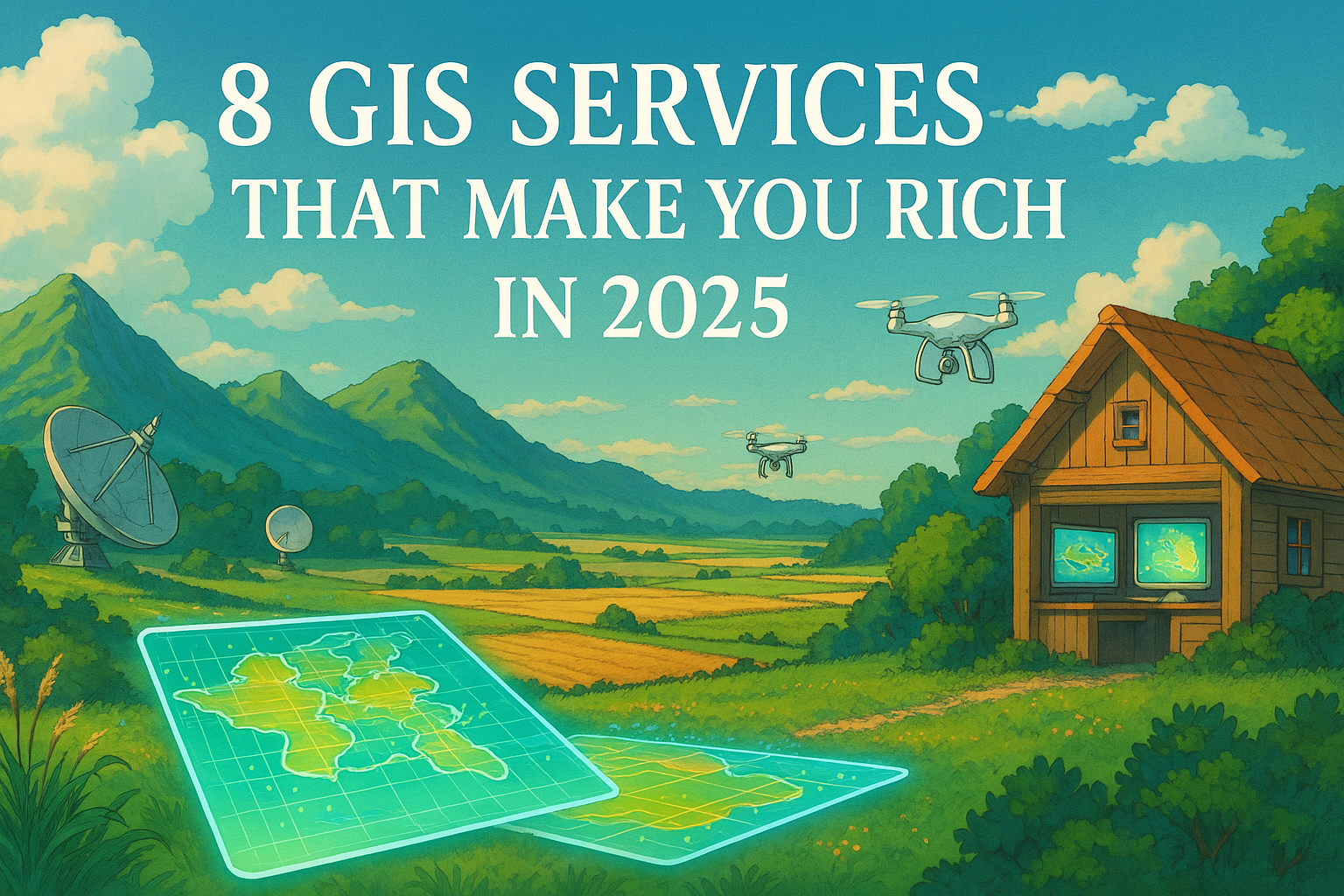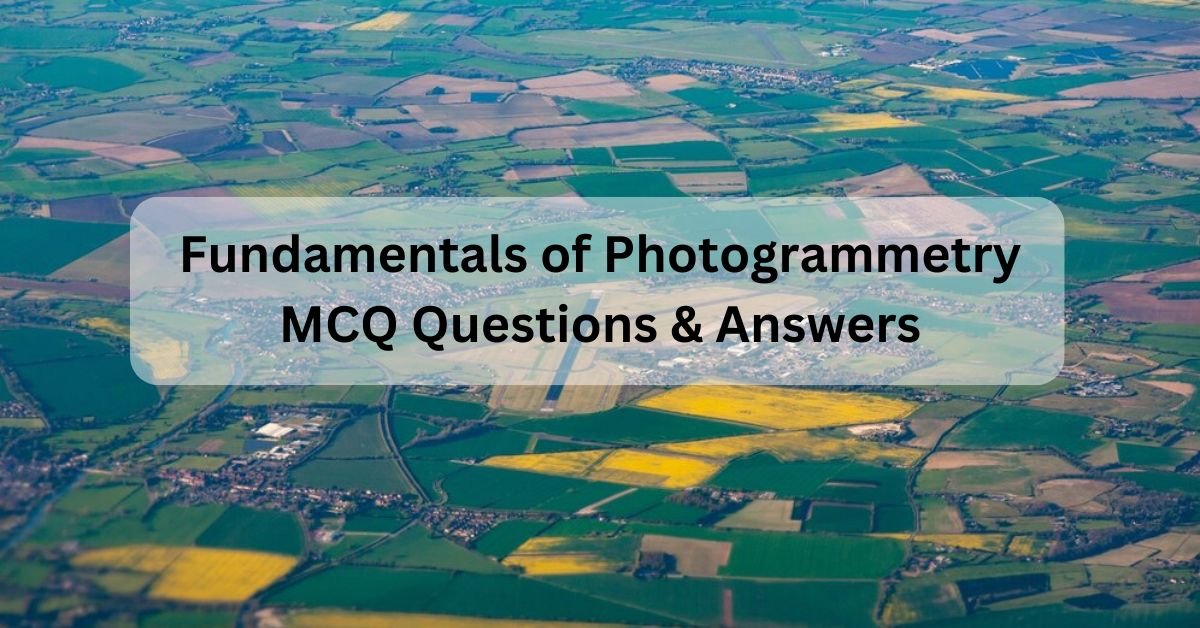8 GIS Services That Make You Rich in 2025
Geographic Information Systems (GIS) are no longer just tools for scientists or government agencies. In 2025, GIS services are empowering entrepreneurs, startups, and tech-savvy professionals to build wealth through data-driven decision-making, smart infrastructure, and digital transformation. Whether you’re a real estate developer, tech consultant, urban planner, or investor, these 8 profitable GIS services can help you tap into billion-dollar industries with ease. 8 GIS Services That Make You Rich 1. Geospatial Mapping: The Foundation of Smart Decision-Making Geospatial mapping is the process of collecting, analyzing, and visualizing spatial data to create maps that help people understand the world around them. These maps go far beyond simple locations—they reveal patterns, trends, and relationships between objects, locations, and events in both natural and built environments. At its core, geospatial mapping translates data into a visual format, making it easier to interpret complex information. By overlaying different layers—such as roads, land use, vegetation, infrastructure, and population density—decision-makers can gain a comprehensive view of any area on the planet. Applications of Geospatial Mapping in 2025: Urban Planning: City planners use it to design smarter, more efficient infrastructure. Real Estate: Developers identify high-value plots, assess land features, and optimize property layouts. Agriculture: Farmers and agribusinesses use it to monitor crop health, soil conditions, and yield zones. Logistics & Supply Chain: Delivery and transportation companies optimize routes, reduce fuel costs, and improve service areas. Disaster Management: Emergency teams assess flood zones, fire-prone areas, and evacuation routes in real time. Geospatial mapping combines multiple data sources, such as satellite imagery, GPS coordinates, drone footage, and historical records, to build highly accurate, interactive maps. Tools like ArcGIS, QGIS, and Mapbox have become industry standards for professionals offering mapping services. 💡 Why it makes you rich: High Demand Across Industries: Real estate developers, governments, utility companies, and logistics providers need spatial intelligence to operate efficiently. Premium Consulting Rates: Businesses are willing to invest heavily in location-based insights that can reduce operational risks and boost ROI. Recurring Revenue Opportunities: You can offer ongoing data analysis, map updates, or subscription-based map access services. Low Overhead with Scalable Potential: With the right software and skills, you can serve clients globally from a single location. 2. Remote Sensing: Unlocking Data from a Distance Remote sensing is a cutting-edge GIS service that allows you to collect, process, and interpret data about the Earth’s surface without physical contact. Using satellites, aerial sensors, and drones, remote sensing captures imagery and environmental data across large areas with incredible accuracy and speed. This technology enables professionals to monitor and assess landscapes, ecosystems, and urban areas from a distance, making it ideal for hard-to-reach, dangerous, or expansive regions. Remote sensing can detect changes over time—such as deforestation, urban sprawl, crop health, or water pollution—using multispectral, hyperspectral, or thermal imaging. Key Applications of Remote Sensing in 2025: 🛰️ Agriculture & Precision Farming: Analyze crop health, moisture levels, and soil conditions to increase yields and reduce input costs. 🌱 Environmental Monitoring: Track forest degradation, coastal erosion, air quality, and wildlife habitats to support conservation efforts. 🏙️ Urban Development: Monitor land use changes, infrastructure growth, and construction projects for smarter urban planning. 🌊 Disaster Management: Detect early signs of natural disasters like floods, wildfires, and droughts—enabling faster response and mitigation. 🛢️ Mining & Oil Exploration: Identify resource-rich zones and monitor compliance with environmental regulations from above. Remote sensing is often combined with GIS software to create dynamic visualizations and analytical models that empower decision-makers across public and private sectors. Popular tools in this space include Google Earth Engine, Sentinel Hub, Planet Labs, ENVI, and DroneDeploy. 💡 Why it makes you rich: 🌍 High-Value Clients: Governments, NGOs, and large enterprises require remote sensing services for large-scale projects and compliance monitoring. 📈 Scalable Business Model: With cloud-based image processing and AI-powered analytics, one small team can manage vast areas of land or infrastructure. 🚁 Rising Demand for Drones: In 2025, drone-based data capture is a booming market. By offering drone surveying, you can charge premium rates with low operating costs. 🔁 Subscription & Retainer Models: Offer ongoing monitoring, monthly reports, or real-time alerts as part of a recurring service package. 3. Application Software Development: Build and Sell Custom GIS Tools In the rapidly evolving GIS landscape of 2025, application software development is one of the most lucrative avenues. At the heart of modern mapping and spatial analysis lies custom software—tools built to serve specific industries, solve unique spatial challenges, and offer seamless user experiences on web, desktop, and mobile platforms. Whether it’s a drone fleet management dashboard, a smart property listing map, or an agricultural land assessment app, businesses are looking for tailored GIS solutions that work faster, smarter, and on the go. As a developer, you can build powerful, industry-specific GIS applications using popular technologies like: Leaflet.js, Mapbox, or OpenLayers (for interactive mapping) PostGIS or Spatialite (for spatial databases) React, Vue, or Angular (for web interfaces) Python or Node.js (for backend processing) Cloud platforms like AWS, Azure, and Google Cloud (for scalability) Key Use Cases for GIS Application Development: 🏘️ Real Estate Mapping Platforms: Interactive maps showing nearby schools, zoning, plot boundaries, and property value heatmaps. 🚛 Logistics & Fleet Tracking Apps: Real-time vehicle monitoring, route optimization, and geofencing alerts. 🛢️ Oil & Gas Asset Monitoring Tools: Mapping pipelines, remote sites, and environmental compliance areas. 🌿 Agritech Apps: Field monitoring, yield estimation, and predictive analytics using spatial data. 🏢 Smart City Dashboards: Integrated GIS solutions for utilities, waste management, traffic control, and urban planning. Unlike general-purpose tools, custom GIS apps solve highly targeted problems, allowing you to charge premium development fees or offer subscription-based models. 💡 Why it makes you rich: 💸 Recurring Revenue with SaaS: Develop once and monetize over time with monthly or annual subscriptions. 🧩 High Demand for Customization: Businesses often need integrations with internal systems like CRMs, ERPs, or IoT sensors—which means ongoing development contracts. 🌐 Global Market Reach: Cloud-based GIS software allows you to serve clients across industries and geographies without physical boundaries. 🤝 White-label Opportunities: Sell … Read more

